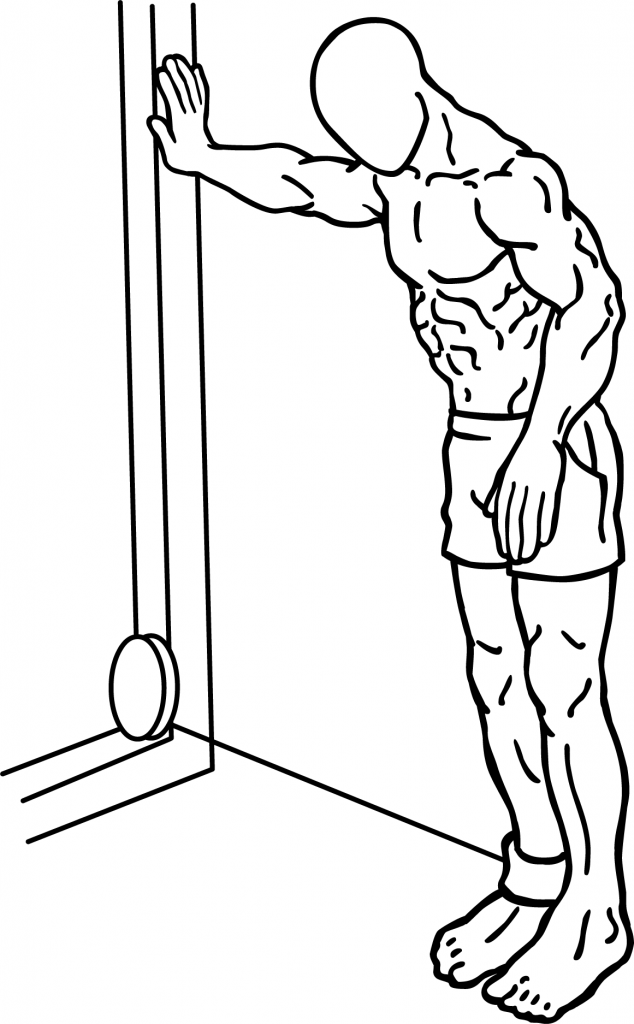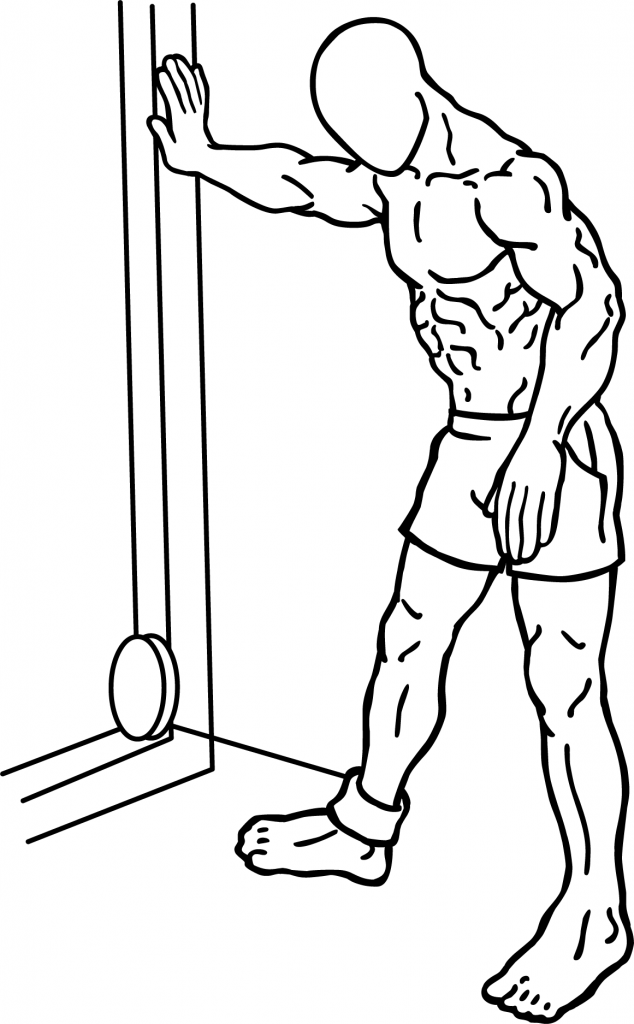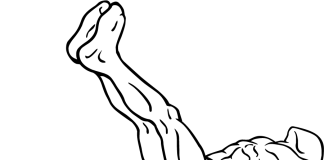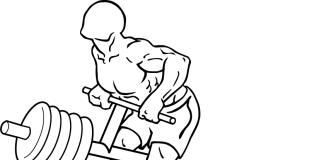Last Updated on December 4, 2014
The Hip Adduction exercise is a fundamental movement for anyone looking to strengthen and tone their inner thighs and hip flexors. Whether you’re an athlete, a fitness enthusiast, or someone aiming to improve overall mobility, this exercise is crucial for building strength and stability in the hip region. Hip adduction targets the muscles responsible for moving your legs inward, which is essential for balance, athletic performance, and injury prevention. Integrating this movement into your workout routine can help you build strong, toned thighs while enhancing your lower body strength and stability.
Why Hip Adduction Is Important
The hip adductors are a group of muscles located on the inner thigh. They play a vital role in movements like walking, running, and stabilizing your body during lateral movements. Here are several reasons why the Hip Adduction exercise is effective:
- Improves Athletic Performance: Strong adductors contribute to powerful leg movements, crucial for activities like sprinting, jumping, and changing direction. Athletes in sports such as soccer, basketball, and martial arts especially benefit from strengthening these muscles.
- Enhances Balance and Stability: The adductor muscles help maintain stability when standing, walking, or performing dynamic movements. Strengthening these muscles reduces the risk of falls and enhances overall balance, particularly important as you age.
- Prevents Injuries: Weak adductors can lead to imbalances that increase the risk of hip and knee injuries. By building strength in these muscles, you can prevent common issues such as strains or even overuse injuries in other areas of the body, like the lower back or knees.
- Tones and Shapes the Thighs: This exercise is highly effective for toning the inner thighs, providing a lean and defined look. Consistent practice can help sculpt the thigh muscles and improve lower body aesthetics.
Step-by-Step Guide to Performing Hip Adduction
Proper technique is essential for targeting the adductor muscles effectively and minimizing injury risk. Follow these steps carefully to get the most out of this exercise:
- Set Up the Equipment:
- Stand next to a cable pulley machine and attach an ankle cuff to the low pulley. Adjust the weight to a manageable load, especially if this is your first time performing the exercise. Make sure the cable is set low, close to the ground, and that the cuff is securely fastened to prevent slipping.
- Position yourself so that the leg with the cuff is closest to the cable stack.
- Assume the Starting Position:
- Stand tall with your feet hip-width apart. Place your stabilizing hand on the cable stack or a sturdy surface for balance. This support helps maintain stability throughout the movement and ensures proper form.
- Engage your core muscles by drawing in your abs, which will help stabilize your upper body and prevent unnecessary movement or leaning.
- Perform the Hip Adduction:
- Keeping your body upright, pull the cuffed ankle across the front of your standing leg, squeezing the inner thigh muscles as you move. The movement should be slow and controlled to fully engage the adductor muscles.
- Your foot should pass directly in front of the standing leg, and you should feel a contraction in the inner thigh. Make sure your torso remains stable and does not lean to the side.
- Return to the Starting Position:
- Slowly bring your cuffed leg back to the starting position. This controlled return (eccentric phase) is crucial for building strength in the muscle. Avoid letting the cable snap back—control the movement from start to finish.
- Repeat and Switch Legs:
- Perform the desired number of repetitions on one leg (typically 10-15 reps per set) before switching to the other leg. Ensure that both sides receive equal attention for balanced development.
Tips for Optimal Performance
To get the most out of Hip Adduction exercises, consider the following tips:
- Focus on Form: Avoid rushing through the movement. Slow, controlled reps will engage the muscles more effectively and help prevent injury. Concentrate on feeling the contraction in your inner thigh with each rep.
- Keep Your Core Engaged: A tight core provides stability and balance, reducing the risk of unnecessary movement in the upper body. This focus will help you maintain an upright posture and isolate the target muscles.
- Adjust the Weight Properly: Start with a lighter weight to ensure proper form. As you become comfortable and your strength increases, gradually increase the resistance for continued progress.
Common Mistakes and How to Avoid Them
Even though Hip Adduction may seem straightforward, several common mistakes can reduce its effectiveness and increase the risk of injury. Here’s how to avoid them:
- Using Too Much Weight:
- Lifting too much weight can cause you to lose balance or lean your upper body. This compromises form and shifts the focus away from the adductors. Start with a manageable weight and gradually increase it as your strength improves.
- Leaning or Twisting the Torso:
- Your torso should remain upright throughout the movement. Leaning or twisting indicates that you’re compensating for weak adductors by engaging other muscles. Use the support of the cable stack and engage your core to maintain stability.
- Swinging the Leg:
- Avoid using momentum to swing the leg. This reduces muscle activation and can lead to strain. Focus on a slow, controlled motion that maximizes engagement of the inner thigh muscles.
- Not Engaging the Core:
- A disengaged core can cause instability and affect balance. Make a conscious effort to tighten your abs before beginning the exercise. This will provide stability and allow you to focus on isolating the adductors.
Variations and Progressions
Once you master the basic Hip Adduction exercise, you can try these variations to challenge your muscles differently or add variety to your routine:
- Standing Hip Adduction with Resistance Band:
- If you don’t have access to a cable machine, you can use a resistance band tied to a sturdy surface. The movement remains the same, but the band provides adjustable tension, making it a convenient home workout option.
- Lying Hip Adduction on the Floor:
- Lie on your side with your top leg bent and placed in front of your bottom leg. Lift the lower leg toward the ceiling, squeezing the inner thigh. This variation is ideal for isolating the adductor muscles in a different way.
- Seated Hip Adduction:
- Perform this exercise using a seated hip adductor machine if available at your gym. The seated version provides stability, making it easier to isolate the inner thigh muscles without the need for balance support.
- Single-Leg Standing Hip Adduction:
- For a greater challenge, try standing on one leg without holding onto the cable stack for support. This variation engages the core muscles more intensely and improves balance and stability.
Benefits of Hip Adduction Exercises
Incorporating Hip Adduction exercises into your fitness routine provides a range of benefits:
- Enhanced Thigh Muscle Development: Regular practice strengthens and tones the inner thigh muscles, helping you achieve well-defined legs and improved aesthetics.
- Improved Functional Movement: Strengthening the hip adductors supports movements like running, jumping, and lateral shifting, enhancing overall athletic performance.
- Reduced Injury Risk: Strong adductor muscles support the hip and knee joints, reducing the risk of strains, sprains, and overuse injuries.
- Increased Hip Mobility: The controlled motion involved in Hip Adduction exercises helps maintain and improve the flexibility and mobility of the hip joint, important for maintaining a full range of motion as you age.
Integrating Hip Adduction into Your Routine
To maximize the benefits of Hip Adduction, it’s important to integrate it properly into your workout:
- Lower Body or Leg Day: Incorporate Hip Adduction exercises into your lower body workout, pairing them with squats, lunges, and leg press exercises to target all the major muscles of the legs and hips.
- Warm-Up or Activation Exercise: Use light resistance for Hip Adduction as a warm-up or activation exercise. Engaging the adductors before heavy compound movements prepares the muscles and joints, improving performance and reducing the risk of injury.
- Part of a Superset: Pair Hip Adduction with Hip Abduction exercises to work opposing muscle groups, ensuring balanced development of the thighs and hips.
Frequently Asked Questions
1. How many sets and reps should I perform for Hip Adduction?
- Start with 3-4 sets of 12-15 reps per leg using a light to moderate weight. Focus on control and gradually increase the weight as you build strength.
2. Can I perform Hip Adduction at home?
- Yes, if you have resistance bands or a home cable setup. Bands offer an excellent alternative for working the adductors without needing gym equipment.
3. Is Hip Adduction suitable for beginners?
- Absolutely. This exercise is beginner-friendly when performed with light resistance and proper support. Beginners should focus on mastering the movement with slow, controlled reps.
Final Tips for Success
- Warm Up Properly: Before diving into your workout, make sure to warm up your legs and hip muscles. Dynamic stretches like leg swings, lunges, or light resistance band exercises can help prepare your muscles and joints for the Hip Adduction movement, reducing the risk of injury.
- Progress Gradually: Start with lighter weights to master the form. Once you feel comfortable and stable, slowly increase the weight or resistance to challenge your muscles and promote growth.
- Listen to Your Body: Pay attention to any discomfort in the hip or knee areas. If you experience pain, revisit your form, reduce the weight, or consult a fitness professional to ensure you’re performing the exercise correctly.
Building a Routine Around Hip Adduction
Here’s how to effectively integrate Hip Adduction into your workout routine based on your goals:
- For Muscle Growth and Definition: Use moderate weights with controlled reps. Aim for 3-4 sets of 10-15 reps per leg, ensuring a full range of motion and squeezing the adductor muscles at the peak of each rep.
- For Functional Strength and Balance: Include Hip Adduction exercises as part of a balanced leg day routine alongside squats, lunges, and calf raises. Pair it with balance exercises like single-leg deadlifts or standing hip abduction to improve stability and coordination.
- To Enhance Mobility: Perform Hip Adduction with lighter resistance and a higher number of reps (15-20) as part of your mobility or flexibility routine. This promotes blood flow and keeps the muscles active without overloading them.
Conclusion
The Hip Adduction exercise is a versatile and effective movement for building lower body strength, stability, and muscle definition. Whether you’re a beginner looking to enhance hip mobility or an athlete aiming for improved performance, incorporating this exercise into your routine can bring noticeable benefits. Focus on form, gradually increase resistance, and maintain consistency for the best results. By mastering Hip Adduction, you’ll not only strengthen and tone your thighs but also improve overall balance, mobility, and functional strength.
With this comprehensive guide, you’re now well-equipped to incorporate Hip Adduction into your fitness journey. Embrace the challenge, stay consistent, and watch as your lower body becomes stronger, more stable, and better defined—one controlled rep at a time.








